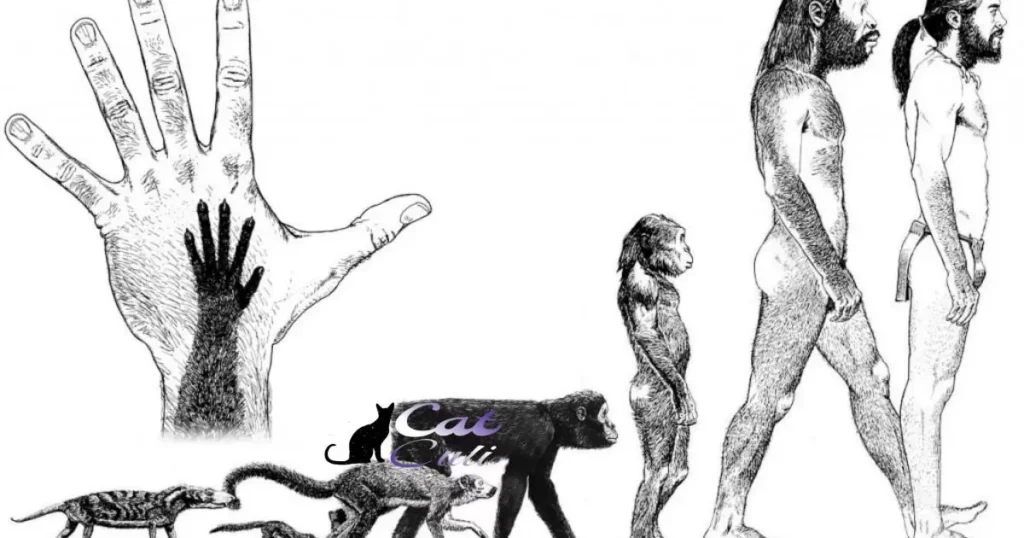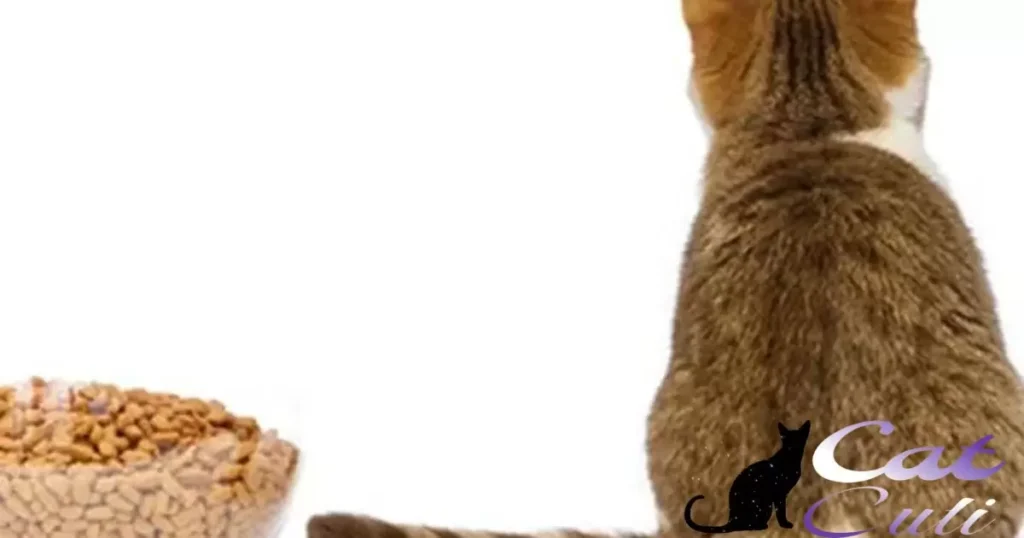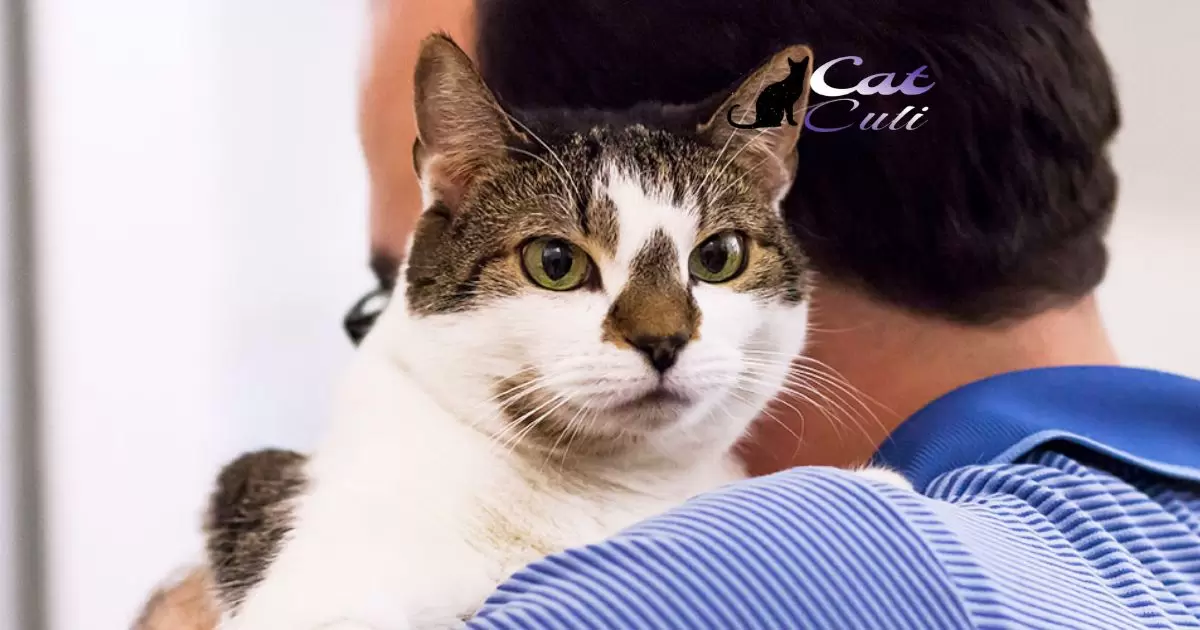Cats often leave food unfinished due to their instinctual behaviours. They prefer fresh meals, so leftovers might not appeal to them. Sometimes, they eat smaller portions to mimic their hunting habits. Additionally, environmental factors or health issues can affect their appetite, causing them to leave food behind.
Have you ever wondered, Why do cats never finish their food? It’s a question that baffles many cat owners. Whether it’s their innate hunting instincts or simply a matter of preference, understanding this feline behaviour unveils intriguing insights into their unique eating habits.
Why Do Cats Never Finish Their Food? is a common question among cat owners. Cats often leave food unfinished due to their natural behaviours and preferences. Understanding these reasons helps in better catering to their needs and ensuring their health and happiness. Stay tuned to explore more about your feline friend’s eating habits.
Feline Fussiness: Why Cats Pickiness Reigns
Cats’ selective eating habits often puzzle pet owners. Their fussiness with food stems from innate behaviours and preferences. They may reject food due to staleness, preferring freshly served meals. Understanding these quirks aids in offering them meals that cater to their discerning tastes.
This pickiness reflects their wild instincts, where they’d opt for smaller, frequent meals to mimic hunting. It’s not uncommon for environmental changes or health issues to affect their appetite too. Learning to navigate their particular preferences ensures a happier, healthier feline companion.
Instincts At Play In Cat Behaviour
Cats’ behaviour is deeply influenced by their instincts. Their hunting instincts drive them to pounce on moving objects, whether it’s a toy or a rustling leaf. Their grooming habits stem from their instinct to stay clean, ensuring their scent doesn’t alert potential prey or predators.
Their territorial nature, marked by scratching and spraying, is a primal instinct to establish boundaries and claim their space.Understanding these instinctual behaviours helps owners create enriching environments for their cats.
Providing interactive toys satisfies their hunting instincts, while regular grooming sessions mimic their self-care routine. Offering scratching posts fulfils their need to mark territory and maintain healthy claws, promoting a harmonious coexistence between cats and their human companions.
Understanding Finicky Feline Eating Habits
Understanding why cats are picky eaters sheds light on their unique dining behaviours. Cats often leave food unfinished due to their natural instincts. They prefer fresh meals, mirroring their hunting habits.
Environmental factors or health issues might also influence their appetite. Unveiling these quirks helps cater to your cat’s needs, ensuring their health and contentment.Exploring the intricacies of feline eating habits reveals fascinating insights.
Cats’ discerning palate stems from their innate behaviours. They might eat smaller portions to mimic hunting and prefer varied textures. By comprehending these tendencies, owners can tailor meals for their cat’s satisfaction and overall well-being.
Exploring The Psychology Of Cat Dining
Understanding how cats dine unveils intriguing insights into their psychology. Their eating habits often stem from natural instincts and environmental influences. Cats’ dining behaviours reveal their preferences for freshness and small, frequent meals, mirroring their hunting tendencies.
Exploring the psychology of cat dining provides a glimpse into their unique behaviours. It highlights their preference for controlling their eating pace and choosing the most appealing food. Observing these patterns helps owners cater to their cats’ needs and enhance their overall well-being.
Evolutionary Traits Shaping Cat Appetites

Cats’ appetites reflect their evolutionary traits. Their ancestors, wild hunters, ate small, frequent meals to survive. This instinct still influences modern cats, leading them to prefer small portions and fresh food, often leaving leftovers.
Their senses, finely tuned over time, make them selective eaters, responding to taste, texture, and smell, ensuring they consume only what suits their instinctual needs.Evolution has shaped cats’ appetites into a blend of instinct and sensory perception. Their preference for smaller meals mirrors their wild ancestors’ eating habits.
Their acute senses guide their food choices, making them discerning eaters who favour freshness and specific textures. These evolutionary traits continue to influence how cats approach their meals, making understanding their appetites a window into their ancient instincts.
Natural Behaviours Impacting Feline Feeding
Feline feeding habits are heavily influenced by their natural behaviors. Cats, stemming from their ancestral instincts, often prefer smaller, frequent meals over larger ones. This preference mirrors their hunting tendencies in the wild, where they consume smaller portions throughout the day.
Their acute sense of smell may lead them to reject food that doesn’t meet their freshness standards.Understanding these natural inclinations is vital for cat owners. By acknowledging these instincts, one can adjust feeding routines to better suit their cat’s preferences.
Providing smaller, more frequent meals or ensuring food freshness aligns with a cat’s natural behaviours, promoting healthier eating habits and contented feline companions.
Unravelling Mysteries Of Uneaten Cat Food
Their preference for fresh meals, guided by the instinct that Cats Get Tired Of Eating The Same Food, mimics their hunting instincts, leading them to leave behind leftovers. This inclination toward variety and novelty in their diet is deeply rooted in their nature, shedding light on the complexity of feline eating habits.
Understanding these habits is crucial for cat owners to ensure their pets’ well-being. By catering to their natural inclinations and providing smaller, more frequent meals, we can better accommodate their preferences. Delving into the mysteries of uneaten cat food sheds light on our furry friends’ unique dietary behaviours and helps us create a more tailored feeding routine for their health and satisfaction.
Health Factors Influencing Cat Food Consumption
| Health Factors | Influence on Cat Food Consumption |
| Dental Issues | Difficulty chewing, leading to reluctance to eat harder food |
| Gastrointestinal Problems | Upsets stomach, resulting in decreased appetite |
| Oral Pain | Discomfort while eating, causing aversion to food |
| Aging | Reduced senses, affecting taste and smell, impacting food interest |
| Stress | Anxiety or environmental changes affecting eating habits |
| Illness | Various diseases impacting appetite and digestion |
| Medications | Side effects altering appetite or taste perception |
| Obesity | Overweight cats might regulate food intake differently |
This table outlines various health factors that can significantly influence a cat’s food consumption habits, affecting their appetite and preferences.
Behavioural Quirks Affecting Cat Mealtime
Cats exhibit unique mealtime behaviours that often puzzle their owners. From selective eating habits to leaving food untouched, these quirks are rooted in their natural instincts. Understanding these behaviours helps owners cater to their cats’ needs and ensure they eat well.
Factors like food temperature, meal placement, and a preference for fresh meals play a significant role in how cats approach their food.A cat’s mealtime behaviour can be influenced by their environment and past experiences. Some cats might prefer solitude while eating, while others enjoy companionship.
These behavioural nuances can impact their appetite and willingness to finish their meals. Owners can adapt by providing a comfortable, stress-free environment during feeding times to encourage healthy eating habits in their feline companions.
Preference For Freshness In Cat Diets
Cats have a strong preference for freshness in their diets. They tend to favour freshly served food over leftovers due to their innate instincts. This behaviour is rooted in their hunting nature, where they seek out and consume freshly caught prey.
Owners notice that cats often show a reluctance to finish their meals if the food isn’t freshly presented, reflecting their natural inclination for food that’s perceived as more recently procured.This preference for freshness aligns with a cat’s primal instincts, making them selective about what they eat.
Cats prioritize meals that resemble their hunting experiences, opting for freshly provided food that mimics the taste and texture of their natural prey. Owners catering to their feline friends’ dietary needs often find that serving freshly prepared meals tends to appeal more to their cats’ instincts, encouraging them to consume their food more readily.
Investigating Picky Eaters: Cats’ Perspective
Understanding why cats are picky eaters offers valuable insights into their behaviour. Cats, known for their discerning taste, often leave food unfinished due to various reasons. Their selective nature might stem from a preference for freshness or mimicking hunting behaviours, making them eat smaller portions at a time.
Investigating picky eating in cats provides a glimpse into their unique perspectives on food. By exploring their behaviours and preferences, owners can tailor meals to better suit their feline companions. This understanding helps ensure their cats stay healthy and satisfied with their meals.
Sensory Sensitivities In Feline Dining Habits

Feline dining habits are influenced by sensory sensitivities. Cats rely on their acute senses of smell and taste to evaluate food. Their discerning nature means they might reject food that doesn’t meet their standards, preferring fresh meals that align with their preferences.
Understanding these sensitivities allows cat owners to cater to their pet’s specific needs and ensure they enjoy their meals.When it comes to food, cats rely heavily on their senses. Their keen sense of smell helps them assess the freshness of food, while taste dictates their acceptance or rejection.
This sensitivity often leads to selective eating behaviours, where cats may refuse food that doesn’t meet their sensory expectations. Recognizing and accommodating these sensitivities play a crucial role in ensuring a happy and well-fed feline companion.
Social Dynamics And Cat Food Patterns
- Cat food patterns are influenced by social dynamics within multi-cat households.
- Dominance hierarchy can impact feeding behaviours, with dominant cats often eating first and controlling access to food.
- Subordinate cats may display different eating patterns, sometimes eating quickly or scavenging for leftovers.
- Competition for resources, including food, can lead to stress and alter eating habits among cats in a social group.
- Monitoring and understanding these social dynamics are crucial for maintaining harmony during feeding times in multi-cat environments.
Cat Food And The Concept Of Satiety
Cat food and the concept of satiety are closely intertwined. Cats have specific dietary needs and unique preferences that influence their eating habits. Understanding their sense of satiety is crucial for ensuring they receive adequate nutrition without overfeeding.
Feline satiety involves more than just filling their bowl; it’s about providing the right nutrients in appropriate amounts. Cats have evolved as obligate carnivores, requiring a diet rich in animal proteins.
Balancing their food to satisfy their hunger while meeting nutritional requirements is key to keeping them healthy and content. Owners play a vital role in gauging their cat’s satiety by observing their eating patterns and adjusting portions accordingly.
Adapting To Cats’ Selective Eating Habits
Understanding and adapting to cats’ selective eating habits is crucial for their well-being. Cats often leave food unfinished due to their instinctual behaviours and preferences. By observing their eating patterns and providing smaller, more frequent meals, owners can accommodate their feline friends’ preferences and ensure they get the nutrition they need.
Offering a variety of food textures and flavours can entice cats to finish their meals. Owners should avoid forcing or free-feeding cats, instead, establishing a routine that aligns with their natural feeding instincts. This approach fosters a healthier relationship between cats and their food, promoting better eating habits and overall health.
Environmental Influences On Cat Feeding Behaviour
Environmental factors significantly impact how cats approach their meals. The location of their food and water bowls can affect their feeding behaviour. Placing them in quiet, accessible spots encourages regular eating.A cat’s feeding routine may alter due to changes in their environment, like new pets or renovations.
Being mindful of these influences helps maintain a healthy feeding pattern for your feline friend.Furthermore, the presence of disturbances like loud noises or unfamiliar scents can disrupt a cat’s appetite.
Cats are sensitive to their surroundings, and any changes might lead to decreased food consumption. By creating a calm and consistent feeding environment, owners can support their cat’s natural feeding behaviour and ensure they receive adequate nutrition.
Multiple Factors Behind Leftover Cat Food
- Preference for Freshness: Cats may prefer freshly served food and might not eat leftovers.
- Instinctual Behavior: Their hunting instincts lead them to eat smaller, frequent meals rather than finishing a whole portion at once.
- Health Concerns: Health issues or dental problems could affect a cat’s appetite, leading to leftover food.
- Environmental Factors: Changes in surroundings, the presence of other pets, or disruptions during mealtime can cause cats to leave food uneaten.
- Variation in Taste: Cats, like humans, have preferences, and they might not like certain flavours or types of food, leaving it uneaten.
Cat Food Choices: Taste And Texture
Cat food choices depend on taste and texture. Cats are picky eaters, often preferring specific textures, some like moist food, while others prefer dry kibble. Their taste preferences vary, and understanding these helps in providing a balanced diet tailored to their liking.
Texture and taste play crucial roles in ensuring cats enjoy and consume their food happily.When selecting cat food, consider the texture your cat prefers. Experimenting with different options allows you to find the ideal balance between taste and texture that suits your feline companion’s palate.
Cat Psychology And Incomplete Meals
Understanding cat psychology sheds light on their tendency to leave meals unfinished. Cats, driven by their innate instincts, often prefer smaller, more frequent meals mimicking their hunting patterns. Their selective nature leans towards fresh food, leading them to abandon leftovers, ensuring optimal nutrition and satisfaction.
Owners benefit from comprehending these behaviours, allowing them to cater to their cats’ needs effectively.Incomplete meals in cats signify a blend of biological instincts and environmental influences.
These feline companions may abandon food due to stress, discomfort, or even dissatisfaction with their feeding area. This behaviour highlights the importance of creating a stress-free, comfortable eating environment and offering smaller, regular portions to align with their natural inclinations, ensuring a content and well-nourished cat.
Nurturing Healthier Eating Habits In Cats

Cats thrive on healthy eating habits, and as owners, we play a crucial role in fostering this. One way is by providing balanced, nutritious meals tailored to their specific needs. Introducing variety in their diet, including wet and dry food, encourages them to enjoy a diverse range of nutrients while keeping mealtime exciting.
Establishing a regular feeding schedule helps regulate their eating patterns, preventing overeating or undereating. Monitoring portion sizes based on their age, weight, and activity level ensures they receive adequate nourishment without overindulging.
By actively engaging in their feeding routines and choices, we can actively contribute to our feline companions’ overall health and well-being.
FAQ’s
Why does my cat not finish food but asks for more?
Cats prefer fresh meals; they might find leftovers less appealing. They mimic hunting by eating smaller portions at a time.
Why does my cat not eat all his food?
Cats may have specific preferences or be full. Environmental stress or health issues can affect their appetite.
Do cats usually finish their food?
Not always. Cats may leave food due to instinctual behaviours, preferring small, frequent meals.
Why does my cat stop eating halfway?
Various reasons: hunting instincts, dislike of stale food, or health issues can cause cats to leave food unfinished.
Conclusion
In understanding the enigmatic question of Why do cats never finish their food? lies the key to better feline care. Their inclination toward fresh meals, mimicking hunting behaviours by consuming smaller portions, and the impact of environmental factors or health issues contribute to their selective eating tendencies.
As caretakers, acknowledging these natural inclinations empowers us to cater to our furry companions’ needs effectively. Providing fresher meals, ensuring varied diet options, and monitoring portion sizes can encourage healthier eating behaviours in our beloved felines.








